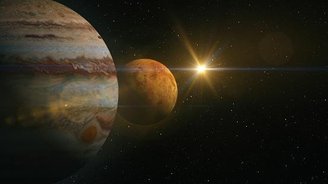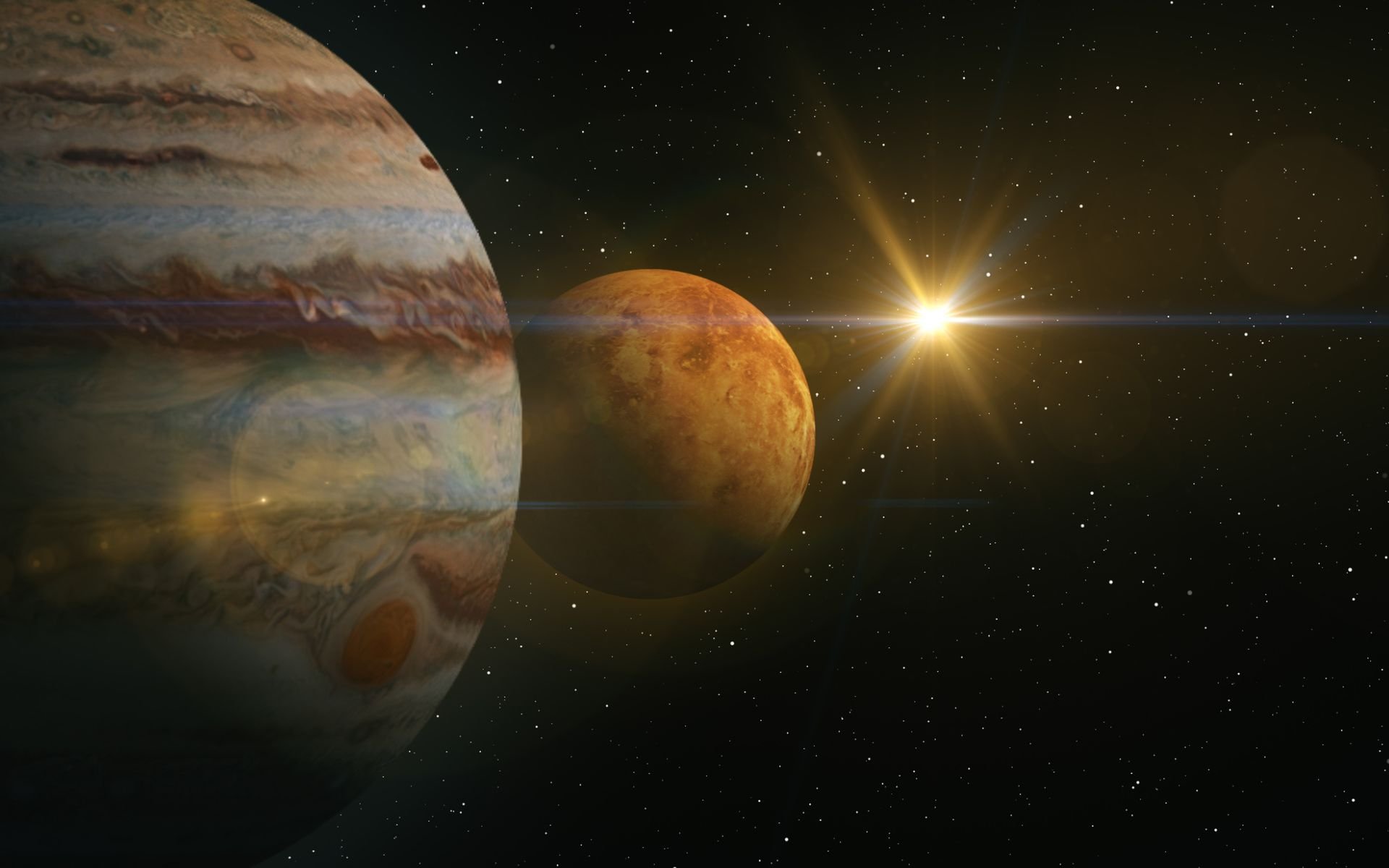For your information, A conjunction is an astronomical event that occurs when two objects, such as asteroids, stars, moons, or planets, appear closer to each other. – This can happen during a collision between two objects or simply as they pass each other. For example, during the new moon phase, the moon is in conjunction with the sun as it moves between the Earth and the central star of our solar system.
The objects even appear close together, but this is just an optical illusion resulting from the perspective of those observing the Earth. In astronomy, scientists explain this Conjunction occurs when these two objects share the same “right ascension” or “ecliptic longitude.”
In the case of a planetary conjunction, two or more planets appear close to each other in the sky from observations on Earth. As we've already shown, they're not really close; It is an illusion, in reality they are separated by distances of millions of kilometers in space. On many occasions, these conjunctions are visible with the naked eye, but the observation will depend on some other factors, such as weather conditions in the area chosen to study this phenomenon.
“A conjunction in astronomy is the apparent meeting or passage of two or more celestial bodies. The Moon is associated with the Sun in the new moon phase, when it moves between the Earth and the Sun and the side facing the Earth is dark. The Encyclopedia Britannica describes the inferior planets – those with orbits smaller than the Earth's (specifically Venus and Mercury) – has two types of conjunction with the Sun.
To explain more about what a planetary conjunction is, TecMundo has collected information from scientists and experts in the field. paying off!
Planetary conjunction
According to astronomers, planetary conjunctions can occur in two ways: One “Right ascension”, when two objects are aligned in the same vertical direction in the sky when viewed from Earth; Or through “Ecliptic longitude”, when two objects are on the same imaginary line that determines the Sun's path throughout the year. Therefore, this phenomenon is important for both amateur observers and professional astronomers.
“A conjunction is a celestial event in which two planets, a planet and a moon, or a planet and a star appear close to each other in Earth's night sky. Conjunctions don't have deep astronomical significance, but they are fun to observe. In our solar system, conjunctions occur frequently between the planets as they orbit the Sun in “Almost the same plane – the plane of the Sun's path – and therefore trace similar paths across our sky,” the National Aeronautics and Space Administration (NASA) described in an official publication.

But it is important not to confuse planetary conjunction with planetary alignment. An alignment only occurs when the planets are aligned on the same “line” in the sky, while a planetary conjunction is associated with a smaller distance between objects in the sky. For example, during a conjunction, the distance between objects can vary between 0.5° and 9° – the conjunction between Jupiter and Saturn, in 2020, occurred at a distance of 0.1°.
Inferior conjunction only occurs when celestial bodies are lined up between the Sun and Earth, such as the planets Mercury and Venus. The upper conjunction appears when the planets are facing the sun, and thus these objects are farthest from the Earth.
Upcoming planetary conjunctions
The conjunction of Jupiter and Saturn in 2020 is considered a special astronomical phenomenon because it has not occurred for more than 800 years. Scientists expected that the last conjunction between these celestial bodies occurred in March 1226; So much so that this phenomenon is called the Great Synchronicity.
“The planets appear to intersect regularly in the solar system, with the positions of Jupiter and Saturn aligning in the sky about once every 20 years,” scientists describe in a study conducted by the National Autonomous University of Mexico (UNAM) on the subject.
In 2024, astronomers expect dozens of planetary conjunctions to occur. For example, on January 27, 2024, a planetary conjunction between Mercury and Mars is expected to occur at a distance of 0.12 degrees between the planets. On April 20, 2024, another conjunction will occur between Jupiter and Uranus with an average distance of only 0.31 degrees. On August 4, 2024, Mars and Jupiter will also enter into conjunction at a distance of 0.18°. All three will be visible to the naked eye in different areas of Earth, some only in specific locations.
Did you like the content? So, stay up to date with other astronomy curiosities here at TecMundo. If you wish, take the opportunity to discover some of the effects of the solar conjunction.

“Wannabe internet buff. Future teen idol. Hardcore zombie guru. Gamer. Avid creator. Entrepreneur. Bacon ninja.”

